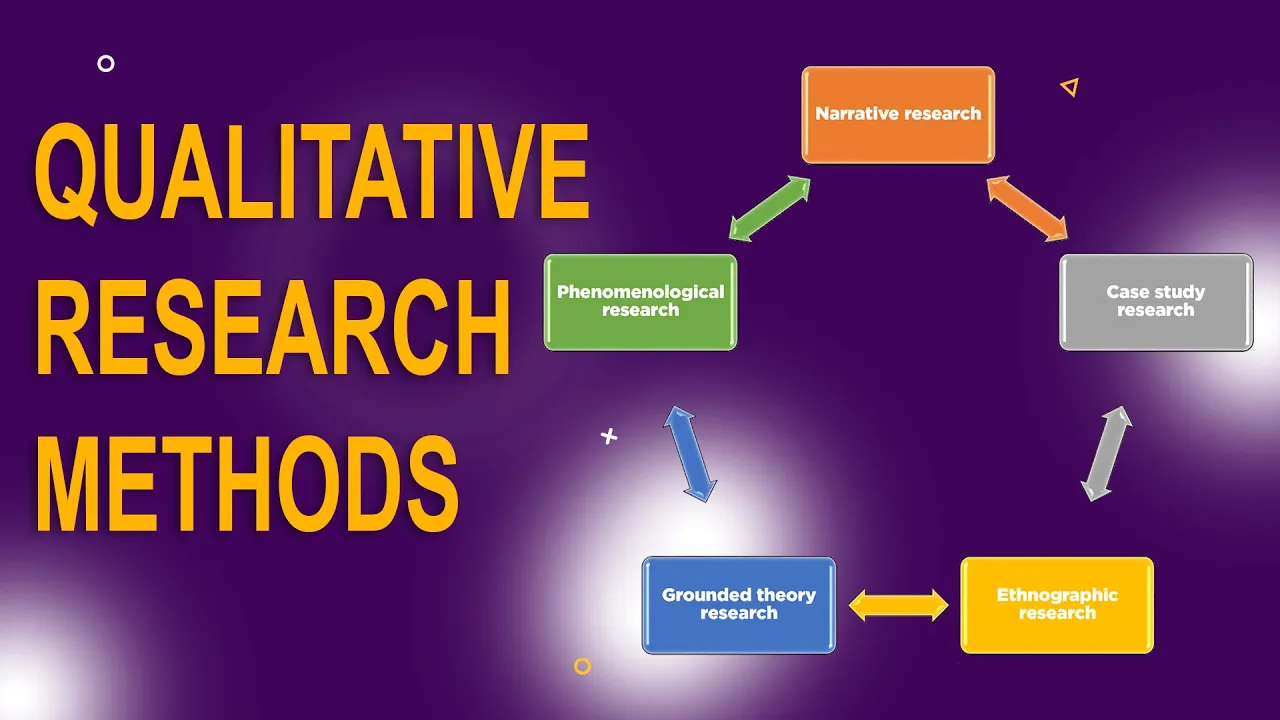- Strategy #1: Triangulation
- Strategy #2: Disconfirming Evidence
- Strategy #3: Reflexivity
- Strategy #4: Member Checking
- Strategy #5: Prolonged Engagement in the Field
- Strategy #6: Collaborate With Participants
- Strategy #7: External Audit
- Strategy #8: Rich Description
- Strategy #9: Peer Debriefing
- Wrap-Up
- References
Have you ever found yourself in a situation whereby you have used an inductive approach to analyse your interviews through thematic analysis and are now wondering how to justify the validity of your subjective interpretations?
In this article we will look at nine ways to justify the validity of our findings in qualitative research. Despite subjective interpretations, which normally come out during inductive thematic analysis.
one of the most popular ways of analyzing qualitative data, we need to justify the validity of our findings.
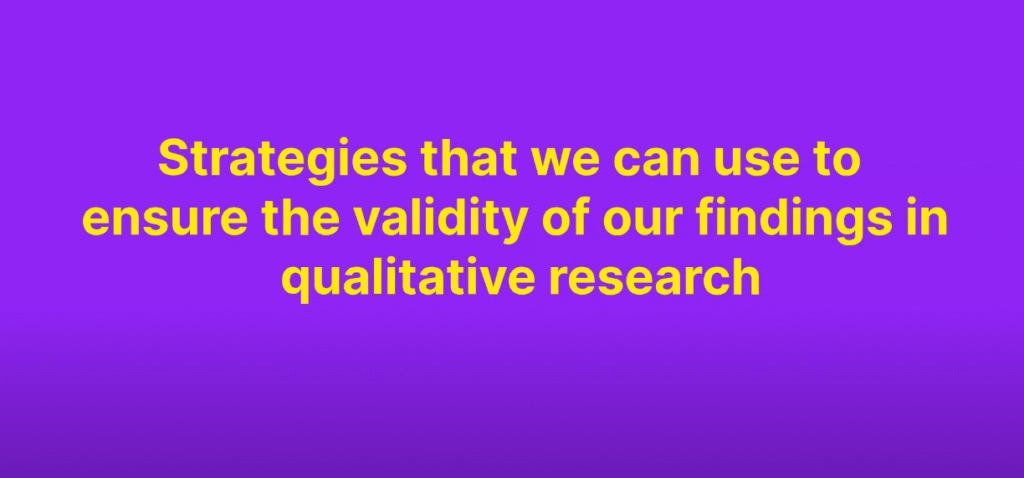
My name is Bernard Mugo.

I like to refer to myself simply as an academic. In the past three years, I’ve helped more than 200 PhD students analyze qualitative data and finally complete their theses/ dissertations.
In the course of supporting such a large number of students, I have gained invaluable experience in the best practices that you can use to perform qualitative analysis of your interviews and be able to retrieve quality findings.
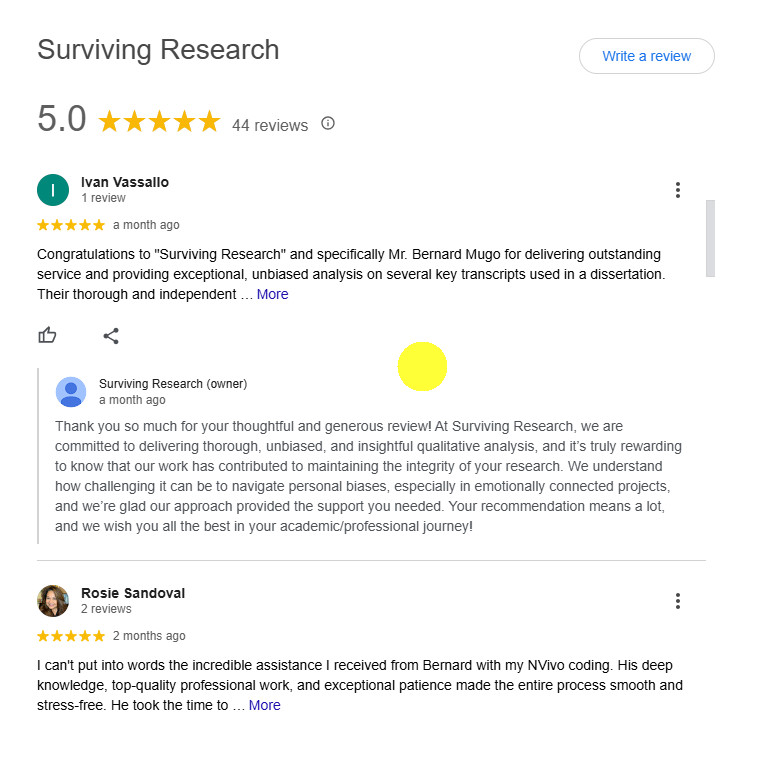
Strategy #1: Triangulation
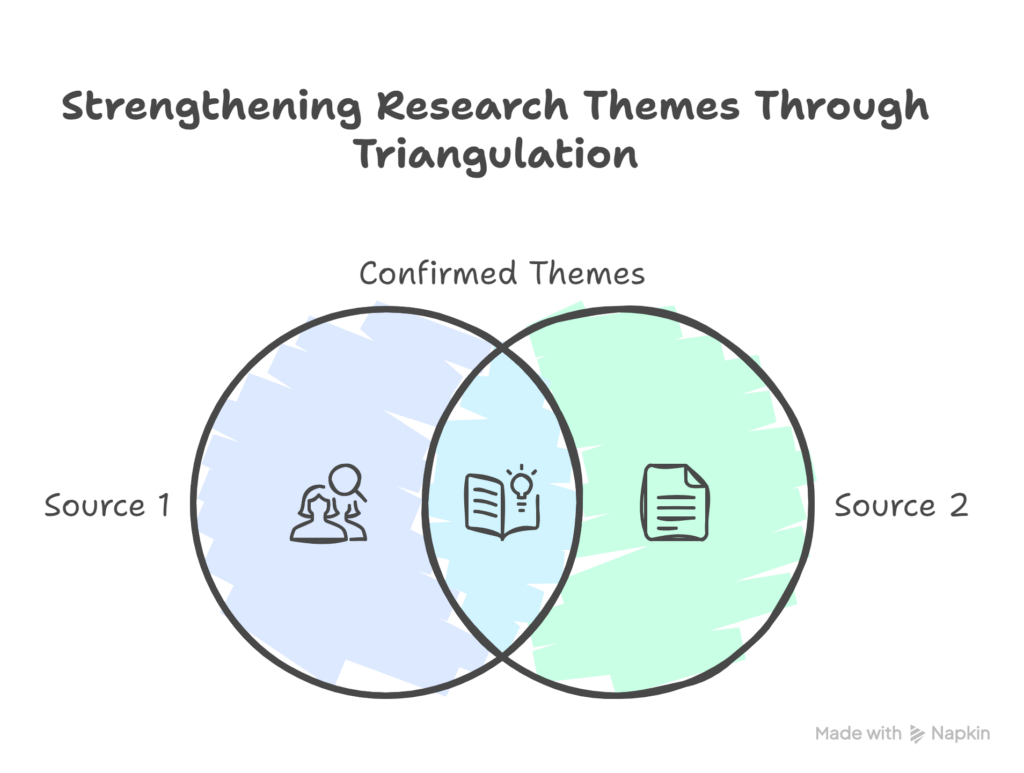
One strategy that you can use to ensure the validity of your findings in qualitative research is triangulation.
Triangulation means using different sources of information to support the themes in your research.
The term actually comes from naval navigation.
Sailors used multiple reference points to figure out where they were at sea.
In research, we do something similar.
There are 4 main forms of triangulation in qualitative research, including:
- Data source triangulation
- Personal Triangulation
- Investigator Triangulation
- Theory triangulation
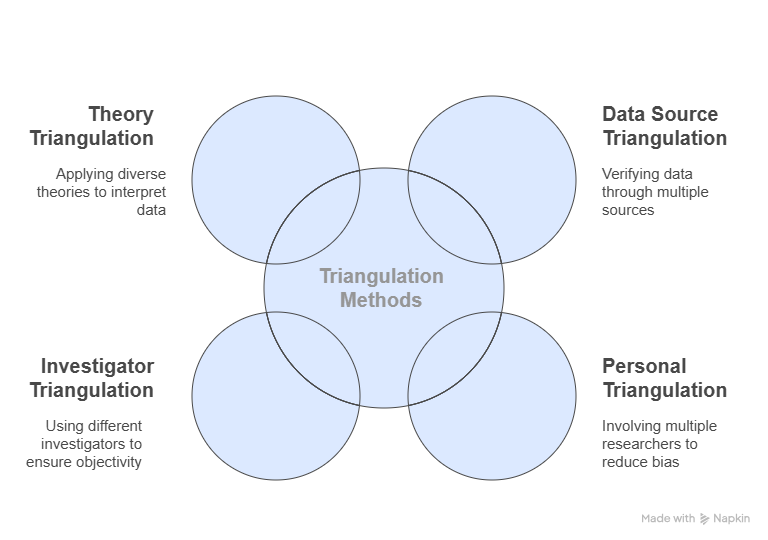
Data source triangulation
You might gather data from interviews, field notes, and documents.
These are examples of data source triangulation (a term introduced by Denzin in 1978).

Personal Triangulation
You can also use person triangulation—getting insights from different people you interview. For example, let’s say you decide to interview different types of participants.

Investigator Triangulation
Where multiple researchers compare their findings.

Theory triangulation
There’s also theory triangulation, which involves looking at your data through different theoretical lenses.
In qualitative research, triangulation often happens naturally during coding. You review different pieces of evidence, compare them, and see what themes consistently show up.

Strategy #2: Disconfirming Evidence
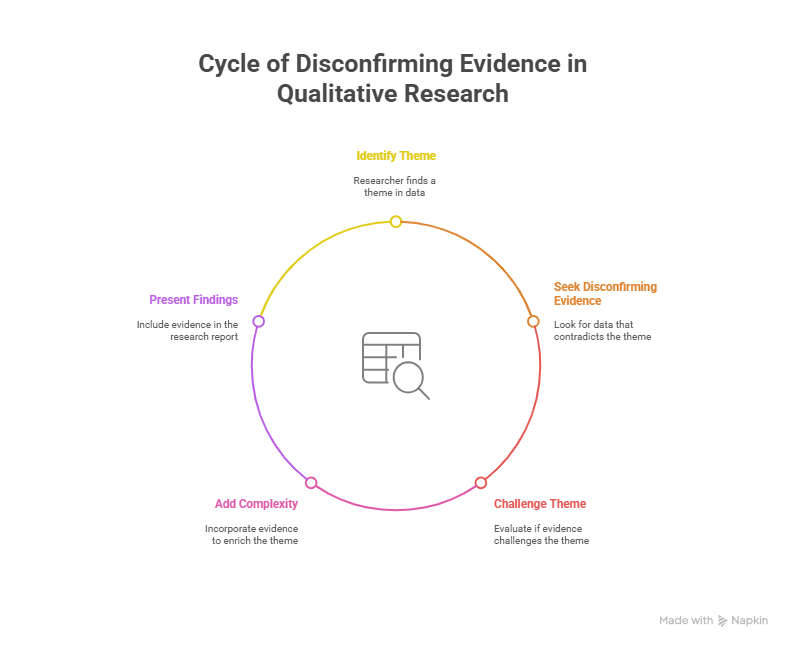
The second strategy that you can use to ensure the validity of your findings in qualitative research is looking for disconfirming evidence.
Disconfirming evidence simply means information that goes against a theme you have identified.
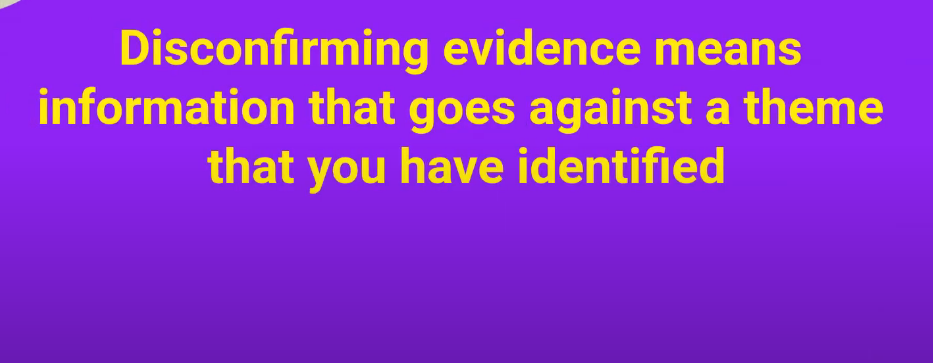
Here’s how it works: First, the researcher finds a theme based on the data.
Then, they go back and check to see if there’s anything that doesn’t fit—any data that suggests a different explanation.
This kind of evidence doesn’t have to be strong enough to completely disprove the theme.
But it does challenge it a bit and adds complexity.
Including these exceptions helps paint a more accurate and realistic picture.
In real-life research, not all evidence lines up perfectly.
There’s almost always something that pushes back on the main idea.
So, when writing up the findings, researchers usually include disconfirming evidence as a small part of the theme section to show that they’ve considered different perspectives.
Strategy #3: Reflexivity
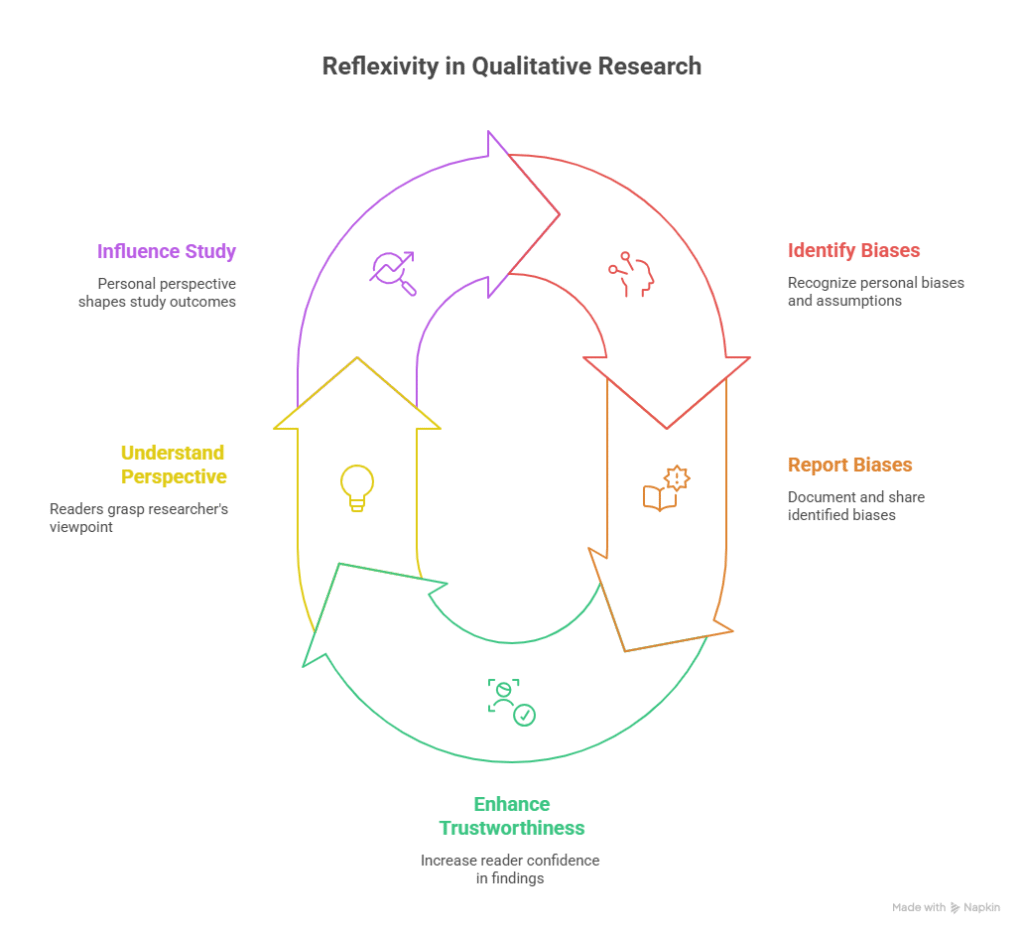
The third strategy that you can use to ensure the validity of your findings in qualitative research is adopting reflexivity.
Reflexivity involves you as a researcher thinking about how your own background and experiences might influence the way you interpret your data.

Reflexivity will entail a researcher clearly identifying and reporting their biases, beliefs, and assumptions, and how those might shape their findings.
By sharing this, your research actually becomes more trustworthy.
Readers can better understand where you’re coming from and how that might affect your interpretation of the data.
Usually, researchers include this in the Methods section of a report.
It’s often under a heading like “Role of the Researcher.”
There, you briefly explain how your personal perspective might have influenced the study.
Strategy #4: Member Checking
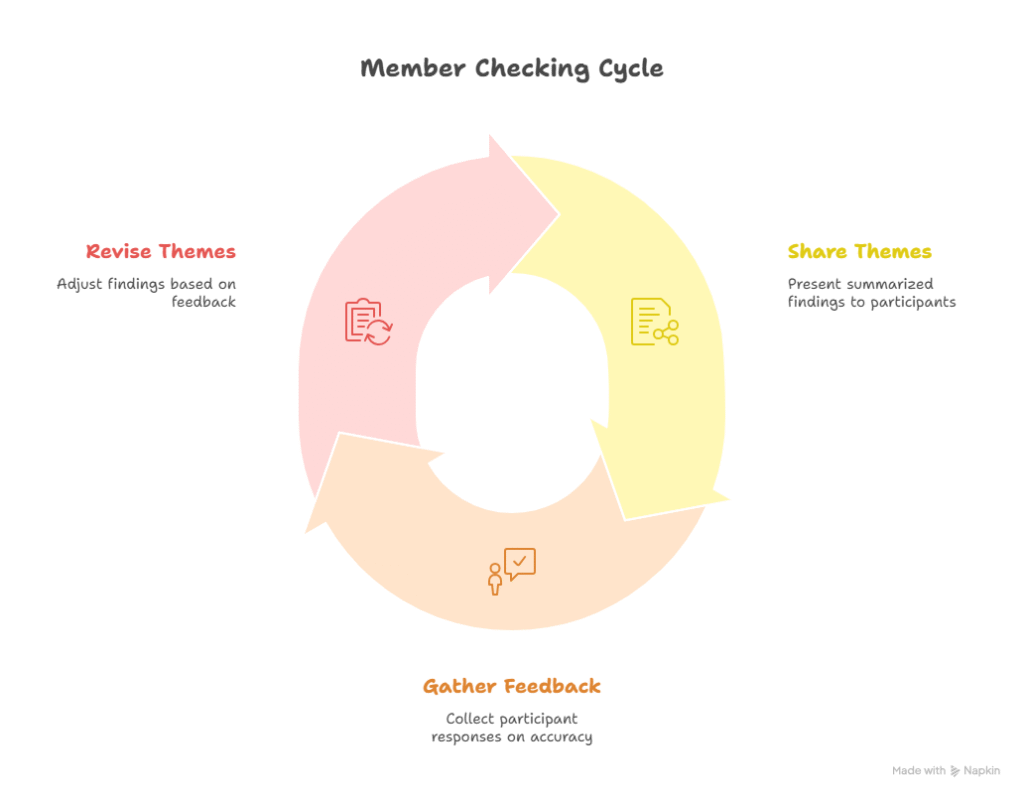
The fourth strategy that you can use to ensure the validity of your findings in qualitative research is member checking.
In member checking, the researcher shares the main themes or stories that came out of the data, not the full transcripts or notes, but a summary of what was found.

Then, the participants are asked: Does this sound right to you?

Is this what you meant?

This can be done in a focus group, where the researcher leads a discussion with open-ended questions.
It can also be done in one-on-one interviews.
The goal is to find out whether the participants feel the findings represent their experiences accurately.
Researchers might ask:
- Is this account accurate?
- Are there important ideas missing?
- Do you disagree with any part of it?
If participants say something’s off, the researcher can revise the themes to better reflect what was actually said.
Strategy #5: Prolonged Engagement in the Field
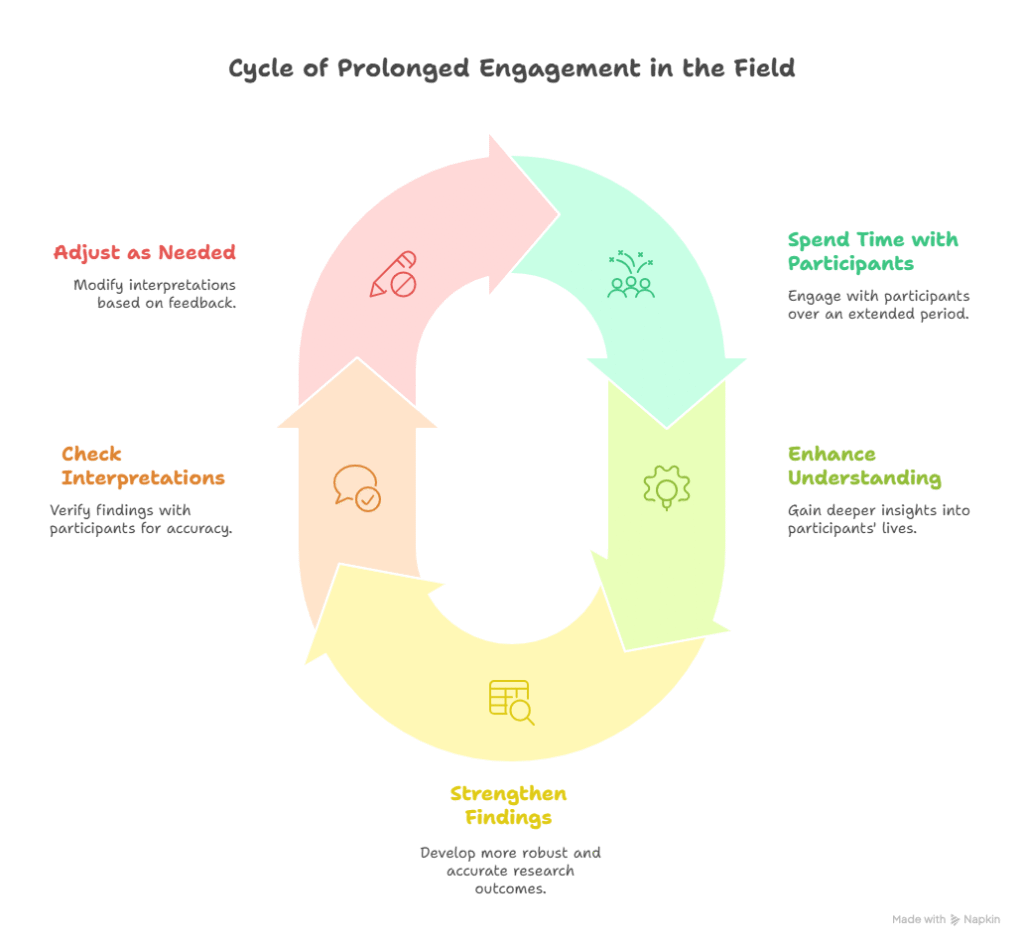
The fifth strategy that you can use to ensure the validity of your findings in qualitative research is prolonged engagement in the field.
Prolonged engagement simply means spending a long time in the field with the participants.

The idea is simple: the more time you spend with participants, the better your understanding of their world, and the more accurate your findings will be.
There’s no set amount of time that works for every study.
It depends on your schedule, the participants’ availability, and your resources.
But if you can spend weeks or even months in the setting, your codes, themes, and overall story will be much stronger.
Researchers often mention in their methods section how long they spent collecting data and interacting with participants.
Staying longer also gives you more chances to check your interpretations with the people in the study, and make changes if needed.
Strategy #6: Collaborate With Participants
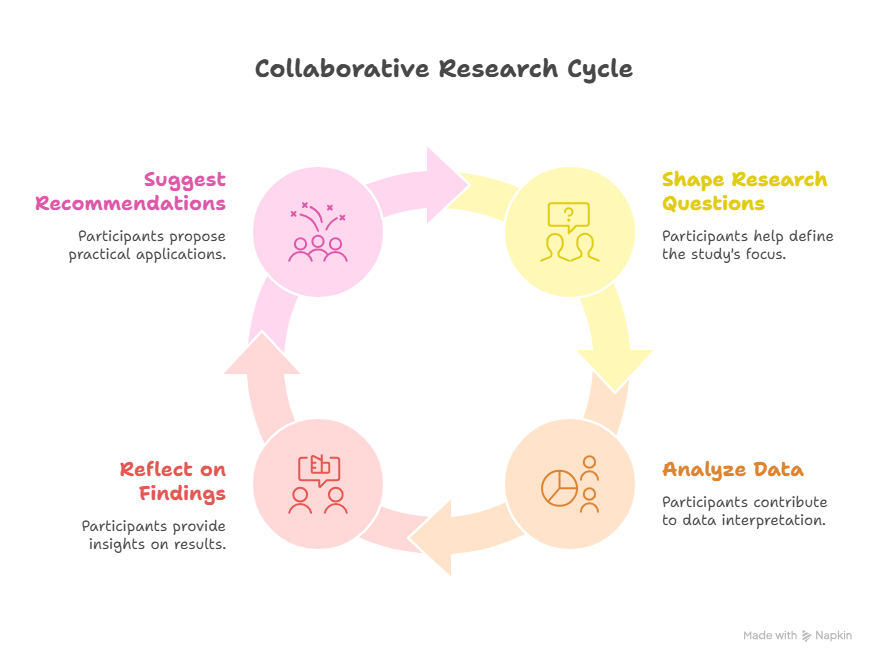
The sixth strategy that you can use to ensure the validity of your findings in qualitative research is collaborating with participants.
In many studies, researchers don’t just collect data and walk away—they check in with participants and involve them in important decisions throughout the research process.

This collaboration can range from very limited involvement to full participation in every phase of the study.
The goal is to build trust and make sure the research is useful to the people it’s about.
Participants might:
- Help shape the research questions.
- Join in analyzing interviews, texts, or images.
- Reflect on the findings and help suggest practical recommendations.
In more formal cases, this is known as community-based participatory research, where participants are seen as co-researchers, not just subjects.
This kind of collaboration doesn’t just improve the accuracy of the study—it also makes the research more ethical, inclusive, and grounded in real-world needs.
Strategy #7: External Audit
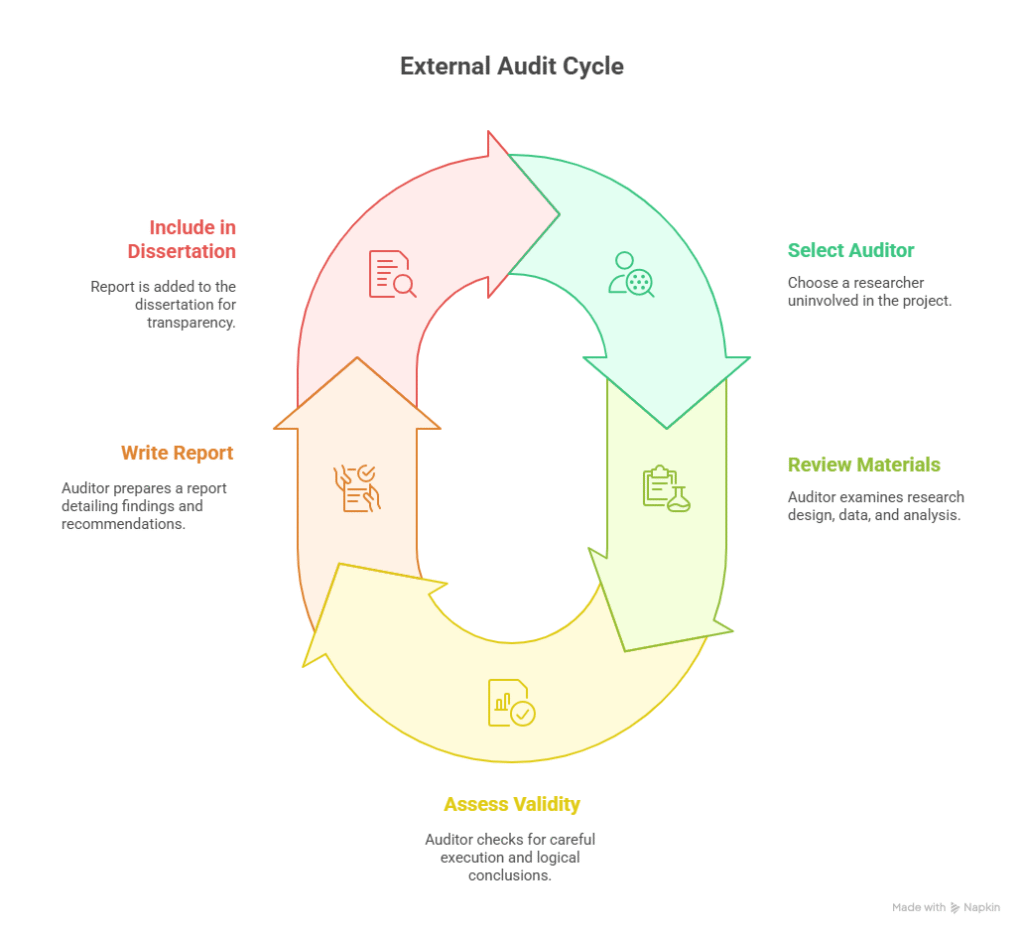
The seventh strategy that you can use to ensure the validity of your findings in qualitative research is implementing an external audit.
An external audit involves getting a fresh set of eyes on a research project.

Someone who wasn’t involved in the research.
An external auditor is usually another researcher who reviews everything:
- Your research design
- Your data
- Your analysis
- Your final findings
Their job is to check whether the study was done carefully and whether the conclusions make sense based on the evidence.
After going through the materials, the auditor writes a report.
This report might be included in something like a dissertation appendix, so others can see that the study was reviewed for quality.
Having someone outside the project verify your work adds a strong layer of credibility and shows that the study was done in a rigorous and trustworthy way.
Strategy #8: Rich Description
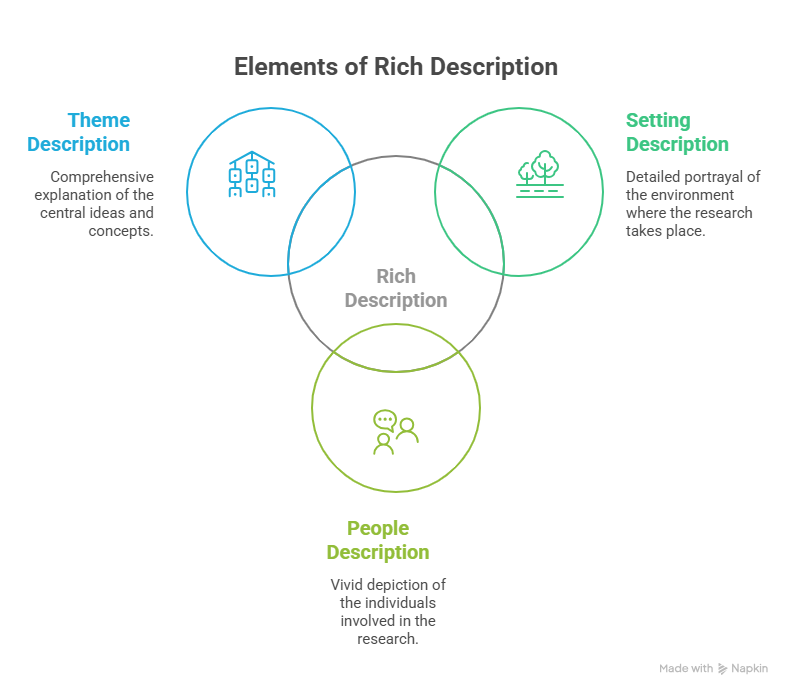
The eighth strategy that you can use to ensure the validity of your findings in qualitative research is by providing rich descriptions.
This means giving detailed, vivid accounts of the setting, the people, and the themes, so that the reader can almost see, hear, and feel what it was like to be there.

A strong description doesn’t just list facts.
It pulls the reader into the scene, like a story, helping them experience what the participants went through.
This might include a bit of dialogue, a moment of interaction, or a clear picture of the environment where the action took place.
This kind of writing brings the research to life and helps others fully understand the experience being studied.
It’s not just about style—it’s a powerful way to show that the findings are grounded in real, lived experiences.
Strategy #9: Peer Debriefing
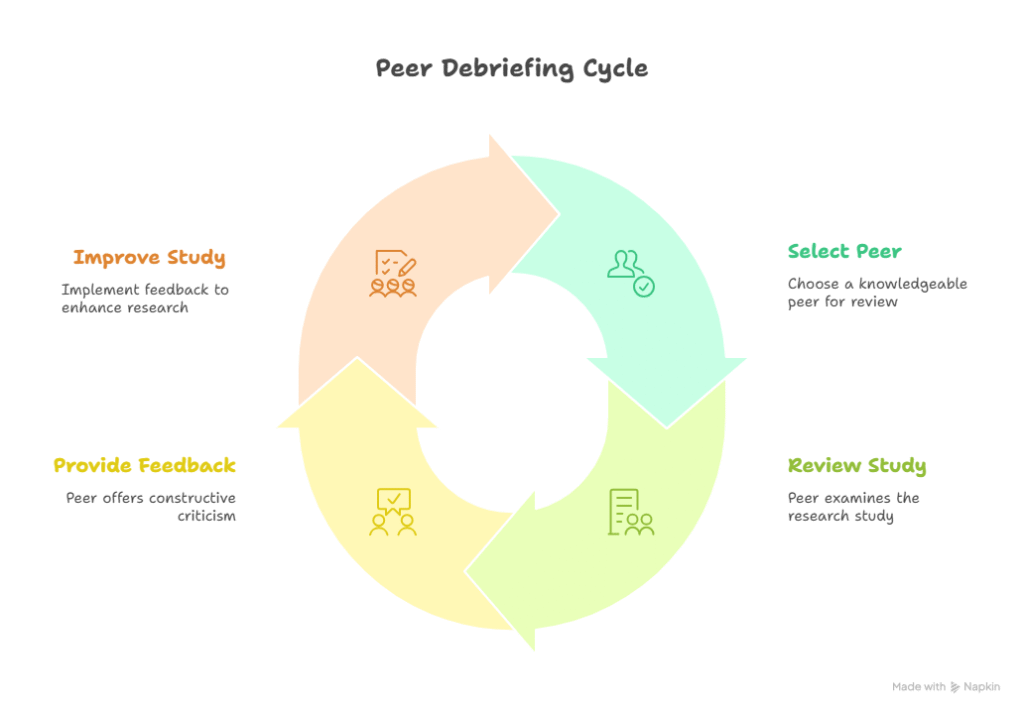
The ninth strategy that you can use to ensure the validity of your findings in qualitative research is peer debriefing.
This is when you ask someone familiar with the topic, or with qualitative research in general, to review your study and give feedback.

This person acts like a critical friend.
They might support your work, but they’re also there to challenge your ideas, ask tough questions, and point out anything that doesn’t quite fit.
The goal is to improve the study by catching blind spots and sharpening your analysis.
Because they understand the topic, peers can offer useful insights while still being honest and objective.
These reviewers might be fellow students, researchers, or even people similar to your participants.
After reviewing your work, they usually provide a brief report with feedback on both the strengths and areas that could be improved.
Wrap-Up
So there you have it—nine ways to make sure your qualitative research is valid and credible, which include:
- Triangulation
- Disconfirming Evidence
- Reflexivity
- Member Checking
- Prolonged Engagement
- Participant Collaboration
- External Audits
- Thick Description
- Peer Debriefing
It is always advisable to use at least two of these approaches to ensure the validity of your qualitative research.
Now, with the 9 highlighted strategies, we can see that it’s very easy to ensure the validity of our findings or to defend the validity of our findings in qualitative research.
References
Baez, J. W. (2020). 30 Essential Skills for the Qualitative Researcher. Sage Publications Inc.

